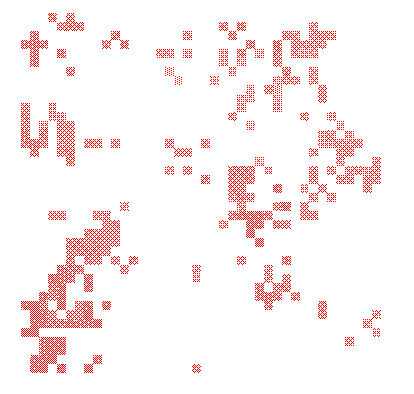
Population ecologists do not formulate models in search for a "grand unified theory"; this would be a senseless undertaking given the enormous diversity among ecological systems. Instead, the models they formulate serve to provide arguments, next to experiment and observation, in an on-going debate about which factors are most important in determining the large-scale behaviour of predator-prey systems or more complex ones. In the course of this debate, many hypotheses have been formulated, and many of these have been put to test, first by observing behaviour to estimate model parameters, and then by testing predicted population dynamics. This, however, is a complex business. A population dynamical model is usually highly simplified compared to the world outside. Comparing a population dynamical analysis with data obtained from experiment or observation is therefore often problematic. It is very difficult to provide unambiguous data in favour of a hypothesis, and it is relatively easy to provide alternative hypotheses for these data.
The conclusions derived from a population dynamical model are no more "hard" than are the assumptions that underlie it. Using evolutionary arguments to explain individual traits instead of merely assuming them may help to sharpen ecological hypotheses.
Given the success of Darwin's theory of evolution caused by natural selection, it may be a surprise that, especially in ecology, evolutionary arguments have long been little employed, and if they were, usually only verbally. Ecologists may have hesitated to include evolutionary arguments on the ground that ecology is so complex that we should first understand how an ecosystem works before we will be able to understand how it evolves. Nonetheless, during the last 20 years or so, the branch called "evolutionary ecology" has gained more and more impetus. At first the focus was at explaining the evolution of traits instead of merely assuming or observing them. Recently, more effort is being devoted to understand the population dynamical consequences of behaviour that has evolved under natural selection.
Basically, the problem is to determine what to expect if populations are subject to natural selection. As is widely assumed, evolution proceeds because new mutants may arise, slightly different from their ancestors. Most mutants will do worse than their parents, but if a mutant is successful it will invade the population, and may eventually replace its ancestral population. This process will go on until a situation is reached in which no new mutant can do better than the type that is predominant in the population. This situation is called "evolutionary stability". It will be clear that the analysis of evolutionary stability is a great tool to formulate hypotheses about behaviour that has evolved under natural selection.
The first step in the analysis is to consider all possible options, or "strategies", and then work out which strategy an individual should adopt to maximize its fitness, i.e., maximize its contribution to the next generation. In many cases, the optimal strategy does not depend on the strategies adopted by other members of the population. In other cases, in particular in interacting populations, the optimal strategy does depend on what strategies prevail. Consider, for example, the defence of prey against predators. If the prey population at large invests heavily in anti-predators traits, the predator population fares less well, and may reduce in density. But then the risk of predation will decrease, which creates opportunities for mutant prey that invest less in defence and produce more offspring instead. When such mutants do better than their heavily-defended conspecifics, average level of defence decreases—to the benefit of the predators. Therefore, to explain the level of defence among the prey, one should take into account how predators mediate interactions among the prey.
The chapters of this thesis provide more worked-out examples of the interdependence of population dynamics and evolution. In this introduction I will discuss the first chapter in somewhat more detail, as it outlines the basic approach. Then I will discuss the remaining chapters more briefly.